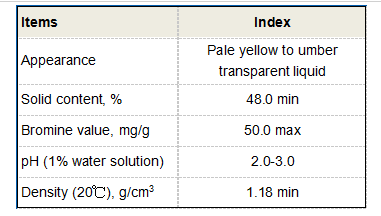Exploring the Applications and Benefits of Organic Phosphonates in Modern Chemistry
The Significance of Organic Phosphonates in Modern Chemistry
Organic phosphonates have emerged as a pivotal class of compounds in modern chemistry, offering unique properties and diverse applications across various fields, including agriculture, medicine, and material science. As derivatives of phosphonic acid, organic phosphonates feature a phosphonate functional group (–PO(OH)CH2–) and serve vital roles in both synthetic and natural processes.
One of the most fascinating aspects of organic phosphonates is their resemblance to phosphates, yet they exhibit distinct chemical behavior that makes them particularly useful. Unlike phosphates, which are widely found in nature, phosphonates are often synthesized for specific applications. Their robust C–P bond (carbon-phosphorus) grants them stability that is particularly useful in agricultural formulations. For instance, several herbicides and insecticides contain phosphonate structures, enabling them to effectively control pests while potentially reducing environmental impact due to their stability and reduced tendency to biodegrade.
In the medical field, organic phosphonates show promise as therapeutic agents. For example, aminoalkylphosphonates have demonstrated antitumor activity and have been investigated for their potential to fight various types of cancer. Moreover, certain phosphonates, such as those modeled after bisphosphonates, have become integral in treating osteoporosis and other bone-related diseases by inhibiting bone resorption and promoting bone density. The success of these compounds in clinical settings underscores the importance of organic phosphonates in pharmacology and their potential to address significant health challenges.
organic phosphonate

Material science is another area where organic phosphonates shine. Their chemical versatility allows them to function as modifiers in polymer chemistry, enhancing the properties of materials. Phosphonate-modified polymers often exhibit improved thermal stability, flame resistance, and mechanical properties, making them attractive for a wide range of industrial applications. Additionally, organic phosphonates can act as ligands in coordination chemistry, forming complexes with various metals and playing roles in catalysis and material synthesis.
Furthermore, research into organic phosphonates continues to expand, particularly in the realms of environmental science and technology. The stability and biocompatibility of phosphonates make them candidates for environmental remediation strategies, where they can be used to sequester heavy metals or degrade pollutants in contaminated environments.
Despite their advantages, the chemical synthesis of organic phosphonates can present challenges. Traditional methods often require harsh conditions and protective group strategies, which can complicate the synthesis process. However, advancements in synthetic methodologies, such as the development of more efficient catalytic processes, are gradually overcoming these hurdles, making the production of organophosphate derivatives more accessible.
In summary, organic phosphonates represent a crucial facet of contemporary chemistry with significant implications for agriculture, medicine, and material science. Their unique properties, stability, and versatility make them invaluable for various applications, driving ongoing research and discovery in this exciting field. As scientists continue to explore new synthetic routes and applications, organic phosphonates are likely to remain at the forefront of innovation, contributing to both technological advancement and solving some of the pressing challenges of our time.
-
Water Treatment with Flocculant Water TreatmentNewsJun.12,2025
-
Polymaleic AnhydrideNewsJun.12,2025
-
Polyaspartic AcidNewsJun.12,2025
-
Enhance Industrial Processes with IsothiazolinonesNewsJun.12,2025
-
Enhance Industrial Processes with PBTCA SolutionsNewsJun.12,2025
-
Dodecyldimethylbenzylammonium Chloride SolutionsNewsJun.12,2025





